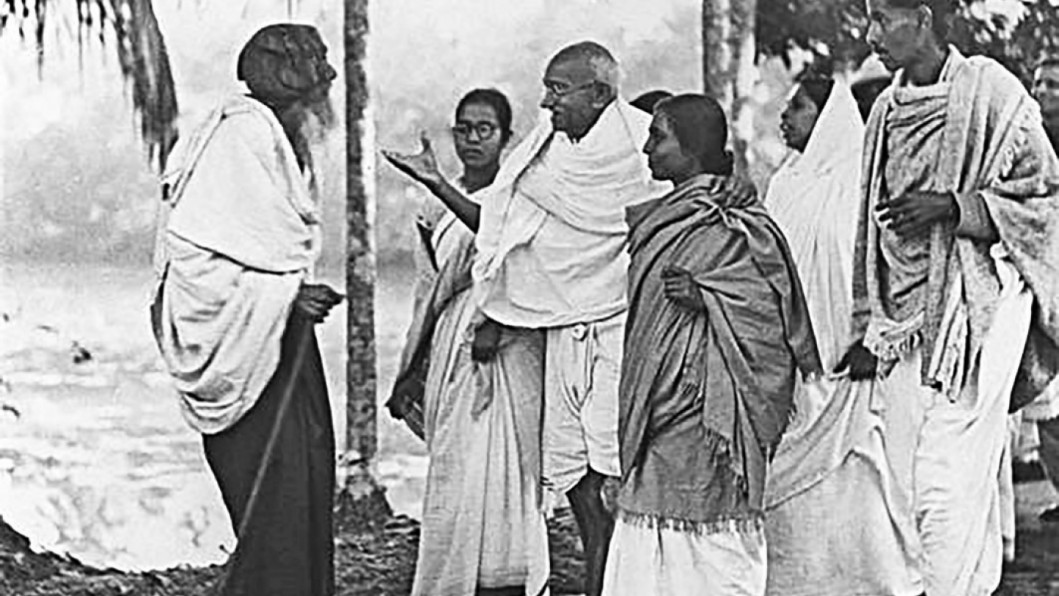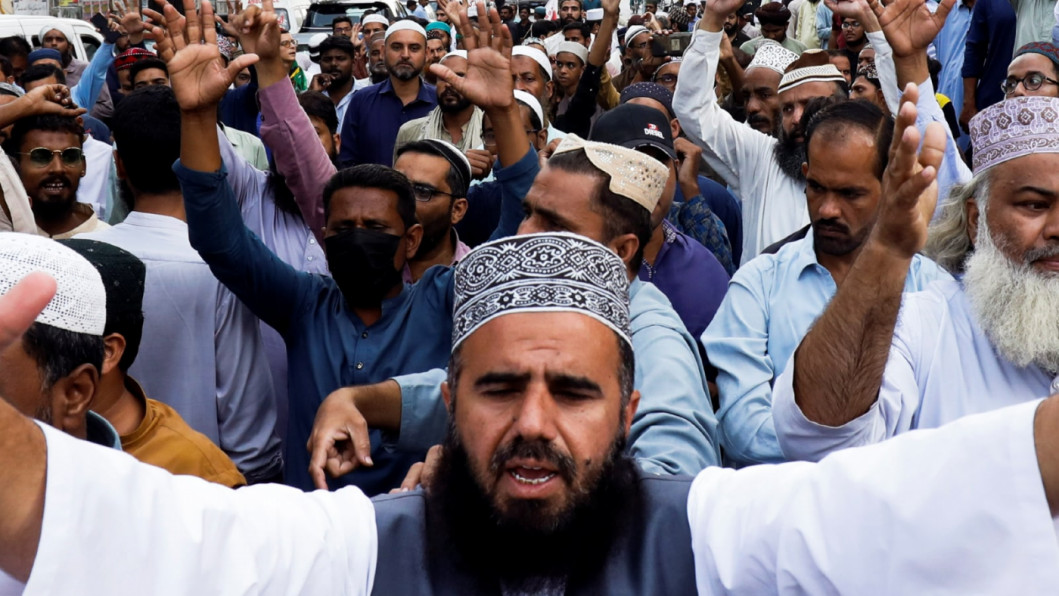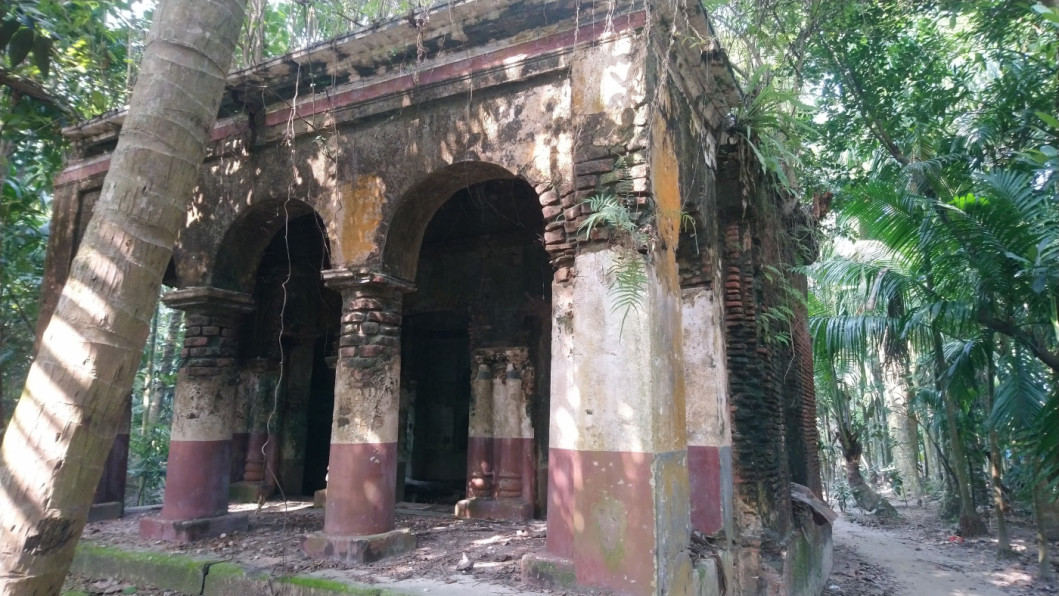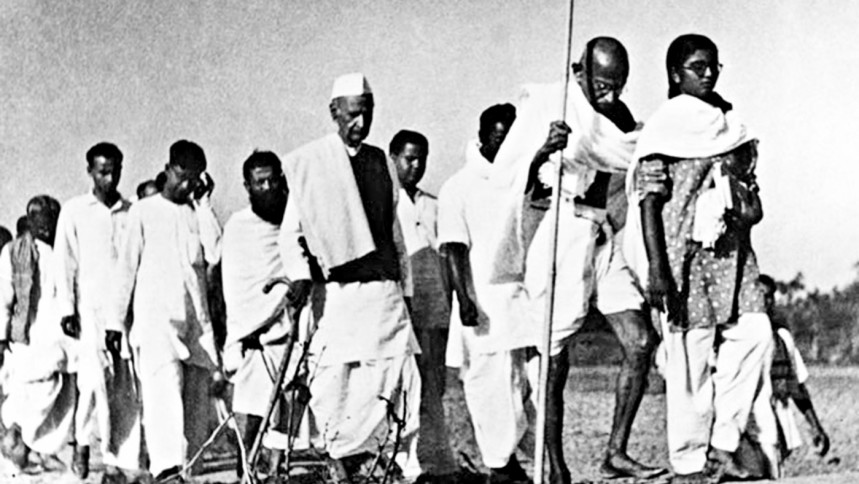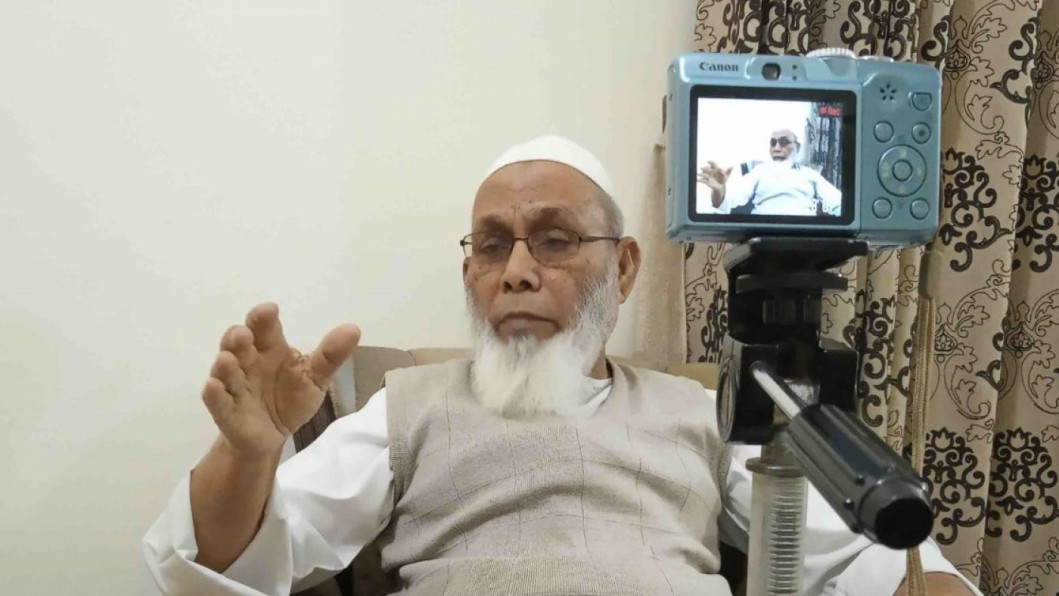Seventy-five years after the Partition of the Indian subcontinent, we are still a long way from understanding the complex ways in which this event affected the everyday lives of people and communities then, and how it still continues to shape our collective consciousness, politics and ways of being. This series, featuring scholars of partition studies from across the subcontinent – and to be published every Saturday – is an attempt at exploring the complexities and contradictions of the momentous event that forever changed the contours of this region. This article examines how years of communal tension peaked and led to violent riots in Noakhali in 1946.
When the clock struck midnight on August 15, 2022, I was on a flight leaving Bangladesh, experiencing the sensation of crossing borders. In a way, I resonated with the moment in a unique way – a moment of joy as well as contemplation. It was reminiscent of the shock of an event when millions of people had to leave their ancestral home for an assigned country, and were never able to return. How do these two (later three) countries that came into being from the strike of Partition 75 years ago look like now? Where do we stand? Have we been able to fulfil the conditions of Partition, or solve the Hindu-Muslim problems in the Indian subcontinent? Or have we been able to make space in each of these countries where the minority question got addressed and solved? The legacy of that enraged separation has endured, leaving the minority communities across the subcontinent in a constant state of fear, often being used as a political card ahead of national elections.
When I was asked to write this article, I did not initially feel enthusiastic, because in my home country of Bangladesh, the events of 1947 are not widely commemorated. The Liberation War of 1971 is celebrated with fanfare at every corner of the country, and the young generations are certainly familiar with the national holidays. People almost forget the events of Partition – with a few exceptions, of course. Indeed, not enough monuments have been erected in my country to remember this day. The only monument of Mahatma Gandhi is in Noakhali, a place he had visited back in 1946 when communal riots broke out between local Hindu and Muslim communities. The “atmosphere of Noakhali” before Partition has had important socio-historical consequences for the community. With the bad name that Noakhali was subjected to from the people of the subcontinent and beyond after the communal riots, this is rather an opportunity to dive deep into the social and political history of Noakhali in the years leading up to Partition.
The British Empire took over Bengal in 1757, but it was not until 1765 that the authority over Bengal’s revenue administration – including that of Noakhali – was granted indefinitely to the East India Company Ltd. American historian Richard Eaton remarks that the British authorities described the area as a virgin forest recently cleared and brought into cultivation for the first time by a number of small landholders called “jungle-cutting landholders.” It was the 1872 census of British India that revealed striking details about Bengal for the first time. Prior to the census, it was believed to be a Hindu-concentrated area; but the census revealed that Muslims were in fact the majority population. The agrarian society in Noakhali and Tippera consisted of predominantly Muslim smallholding peasantries, while the Hindu upper caste comprised the moneylending groups along with the rent collectors.
The communal relationship between Hindus and Muslims in Noakhali started deteriorating arguably in the late 1930s. Muslims in Noakhali, the financially-disadvantaged majority, relied upon Hindu money-lenders to support their agriculture and meet basic needs. Due to the Great Depression in the 1930s, the relations between Hindu creditors and Muslim clients broke down in East Bengal when jute prices plummeted.
Indian historian Dr Sugata Bose maintains that “the breakdown of social symbiosis reached its dramatic climax during the Noakhali and Tippera riots in 1946” (Agrarian Bengal: Economy, social structure and politics, 1919-1947, Pg 182). Some Muslim leaders responded to this fractured relationship by spreading a political message that Muslims should unite, and Hindus turned out to be redundant in the community. One such person, the Muslim leader and member of Bengal Legislative Assembly Maulavi Syed Ghulam Sarwar Husseini, used inflammatory language against upper-caste Hindus. The power held by the Hindu money-lenders was challenged by communal propaganda, frequently encouraging Muslims not to work at Hindu houses and not to buy goods from Hindu-owned shops. By segregating Muslims from Hindus, the goal was to shift power and develop personal and collective identities among Muslims that led to a new trajectory for the community’s future in Noakhali.
Even though the upper-caste Hindus were a minority, they also made up a powerful communal bloc in Noakhali. Of the Muslims, who were the majority in Noakhali, around 98 percent were tenants and debtors, ruled by the Hindus. The Hindus were frightened by the meteoric rise of a Muslim collective identity that was based on a shared sense of “we”-ness, reckoning certain transformations of the society that posed a threat to the Hindu community and individual survival. Moreover, the demand of separate land in the Lahore Resolution for Indian Muslims contributed profoundly to transforming the community relationship, uniting Muslims under one banner – the Muslim League.
With the rise of the Muslim League in Bengal in the late 1930s, Sarwar wanted to take hold of the political steering wheel. He mobilised the Muslims in Noakhali in order to seize political power, using daily happenings in the community as opportunities to flame anti-Hindu rhetoric. For instance, Kshitish Babu, a teacher at the local Lamchar HE School, called a Muslim student haramjada (a bastard) while scolding him in retaliation for being insulted by the student. During a large public meeting, Sarwar referred to this incident, grew agitated, and attempted to tarnish the reputation of Hindu deities by calling them “prostitutes” and mocking Hindu people who performed puja (worship) with flowers. He also criticised Kshitish Babu’s history lectures about Gandhi and Subhash Chandra Bose. Finally, he threatened to drag Babu through the street with shoes around his neck.
In Noakhali, Muslims largely did all sorts of manual labour, such as cultivating land, cropping paddy, gathering wood, plying boats, digging earth, and selling vegetables and milk. The richer Hindus, who believed their status prevented them from doing any menial work, remained dependent upon the Muslims’ labour. Ironically, almost all old markets for a long time were owned by the Hindus, who determined what goods would be sold at the markets. However, the local Krishak Samity planned to sell beef in the market’s open space in the late 1930s. Hindus resented this plan. Meanwhile in 1939, when politicians freely exploited local feuds and partisanship, lots of markets in Raipur, Duttapara, Nandigram and Karpara were successfully boycotted for one reason or another. This situation persisted for a short time when all the recognised Congress leaders were in jail.
The Hindu politicians of Congress in Noakhali accused Muslims of setting one class of Hindus against another within the same community. The underprivileged Hindus, who were not disturbed by Muslims, remained neutral in this controversy. Because the depressed class of Hindus are seen as a lower class in the caste system, Muslims did not bother them as their targets were those in power. The lower-caste Hindus were generally poor, torn between sects; moreover they had natural grievances against the upper-caste Hindus on the questions of interdining and general treatment. In this scenario, divides were not simply determined by religion, but were instead conditioned by more complex socio-economic differences.
The social tension between Hindus and Muslims in Noakhali in the late 1930s was rooted in the question of who held power. Since the Muslims (the majority), whom the money-lending, upper-caste Hindus (the minority) had ruled for generations, now wanted to change societal power in their favour, they tried to interrupt the power class structures within society. This was an opportunity for the Muslims to think collectively. The local Congress leaders wrote to Gandhi that they were unsafe in the hands of the incumbent ministry. This was a predicament for these Hindus. The Hindu Mahasabha, at its annual session held in Calcutta, protested the policy of the Ministry of Bengal and its various legislative enactments and administrative measures. Simultaneously, leaders like Sarwar were enthusiastic about the Bengal government, which, Sarwar believed, had been re-established after 250 years.
This imbalance of power, with Muslims possessing provincial authority and Hindus enjoying local power, was irreconcilable and a potential source of distrust. The communal resentment was aired through different means by both sides. This was the problem that ultimately culminated in the Noakhali riots in 1946, and played a role in the Partition in 1947.
Source: The Daily Star
